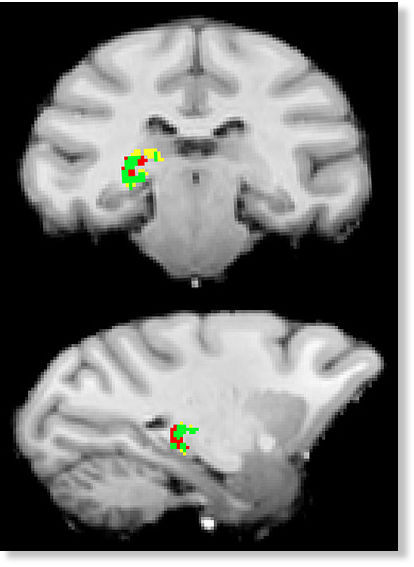
© Unknown
A mysterious region deep in the human brain could be where we sort through the onslaught of stimuli from the outside world and focus on the information most important to our behavior and survival,
Princeton Univ. researchers have found.
The researchers report in the journal
Science that an area of our brain called the pulvinar regulates communication between clusters of brain cells as our brain focuses on the people and objects that need our attention. Like a switchboard operator, the pulvinar makes sure that separate areas of the visual cortex - which processes visual information - are communicating about the same external information, explains lead author Yuri Saalmann, an associate research scholar in the
Princeton Neuroscience Institute (PNI). Without guidance from the pulvinar, an important observation such as an oncoming bus as one is crossing the street could get lost in a jumble of other stimuli.
Saalmann says these findings on how the brain transmits information could lead to new ways of understanding and treating attention-related disorders, such as attention deficit hyperactivity disorder (ADHD) and schizophrenia. Saalmann worked with senior researcher Sabine Kastner, a professor in the Department of Psychology and the Princeton Neuroscience Institute; and PNI researchers Xin Li, a research assistant; Mark Pinsk, a professional specialist; and Liang Wang, a postdoctoral research associate.
The researchers developed a new technique to trace direct communication between clusters of neurons in the visual cortex and the pulvinar. The team produced neural connection maps using magnetic resonance imaging (MRI), then placed electrodes along those identified communication paths to monitor brain signals of macaques. The researchers trained the monkeys to play a video game during which they used visual cues to find a specific shape surrounded by distracting information. As the macaques focused, Saalmann and his colleagues could see that the pulvinar controlled which parts of the visual cortex sent and received signals.
Saalmann explains the Princeton findings as follows, "A fundamental problem for the brain is that there is too much information in our natural environment for it to be processed in detail at the same time. The brain instead selectively focuses on, or attends to, the people and objects most relevant to our behavior at the time and filters out the rest. For instance, as we cross a busy city street, our brain blocks out the bustle of the crowd behind us to concentrate more on an oncoming bus."
She continues to say, "The transmission of behaviorally relevant information between various parts of the brain is tightly synchronized. As one brain area sends a signal about our environment, such as that a bus is approaching, another brain area is ready to receive it and respond, such as by having us cross the street faster. A persistent question in neuroscience, though, is how exactly do different brain areas synchronize so that important information isn't lost in the other stimuli flooding our brains. Our study suggests that a mysterious area in the center of the brain called the pulvinar acts as a switchboard operator between areas on the brain's surface known as the visual cortex, which processes visual information. When we pay attention to important visual information, the pulvinar makes sure that information passing between clusters of neurons is consistent and relevant to our behavior."
According to wikipedia the Pulvinar, in ancient Roman religion, was an "empty throne," awaiting occupation by a god or goddess.